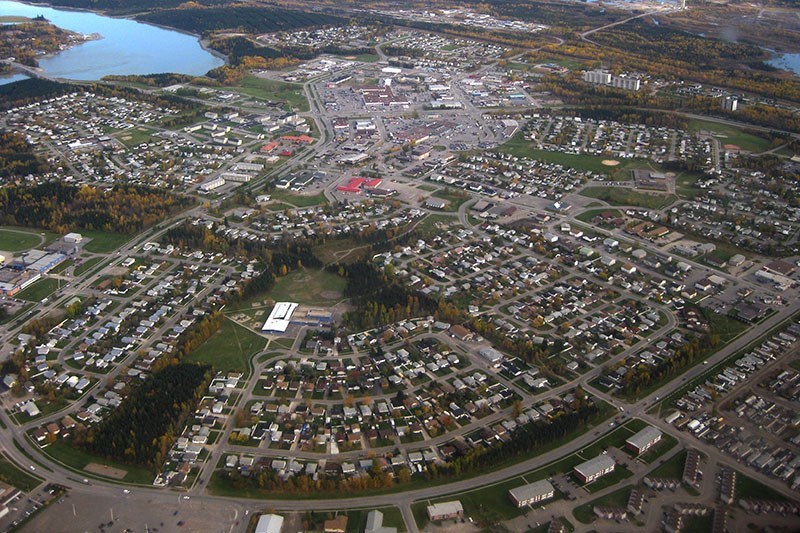The news that Thompson’s population dropped nearly five per cent from 2016 to 2021, which was released by Statistics Canada on Feb. 9, may not be totally surprising but it doesn’t bode well for those who remain.
Northern Manitoba’s largest city is the 13th fastest-declining municipality in Canada, percentage-wise, and by far the most quickly shrinking one in the province. At 4.7 per cent down from five years prior, Thompson’s population decline was more than twice as much as the next-highest municipality in the province.
Some factors contributing to the shrinkage, including Thompson being in Western Canada, being located far from a census metropolitan area and being heavily dependent on a single, natural resource-based industry, are common to many of the 25 fastest-shrinking municipalities in the country. Others, such as the job losses at Vale’s Manitoba Operations, which undoubtedly played a significant role in Thompson’s dropping population, are not. But regardless of the exact specific reasons and how much of the decline each of them is responsible for, the ramifications are undeniable.
First of all, having fewer people means the City of Thompson will get smaller amounts of certain types of provincial and federal government funding, which are determined on a per capita basis. In other words, the governments assign a certain dollar value per person with which to calculate grant amounts. When you don’t have as many people, you don’t get as much of this outside funding as you would if the population was larger.
Then there’s the matter of how Thompson’s government is funded. You know, the dreaded property taxes. Given that Thompson has a smaller business sector than many other similar-sized communities, this burden falls more heavily on residential properties here than it does in some other places. As the number of residents declines, that burden is divided among fewer properties, especially when people decide to walk away from their mortgages and the tax bills attached to those properties. Unfortunately, thanks to inflation, contracted wage increases and rising policing costs, the latter of which are not really within city government’s control, it’s unlikely that Thompson’s budget could decline at the same rate as its population. In fact, as the number of taxpayers has dwindled, budgets have actually grown. Rising budgets divided by fewer taxpayers mean a higher individual tax bill for those taxpayers that remain.
The same holds true for the water utility. If there are fewer customers, the only way that water rates can stay the same and still cover the costs of running the water treatment and distribution and sewage disposal operations is if people use more water, which will still end up costing them more money. Unfortunately, one of the effects of charging for water use based on consumption, as Thompson does, is a decline in the amount of water used. That’s actually one of the goals of water billing and there are numerous reasons why that’s a good thing, but the combination of declining consumption and a shrinking population means that water and sewer services, much of which consist of fixed costs that don’t change even as less water is treated and pumped, will have to get more expensive in order for the utility to break even, as required by law.
Really, there are only two ways out of this cycle of Thompson’s cost of living getting more expensive as a result of the number of residents going down. One way is for the municipal government to cut costs. Of course, given that staffing is the biggest single expense category in the city’s budget, that would probably mean cutting some jobs, which might lead to the people who held those jobs leaving town. Also, even at current spending levels, Thompson doesn’t have some things that many similarly sized communities take for granted, like a pool. Austerity would mean even more sacrifices would have to be made by people who want to stay in Thompson.
The other way out is by attracting more new residents, which is easier said than done. Although further decline is not necessarily inevitable, reversing the trend would probably require something like a huge increase in the price of nickel that made Vale want to expand production. Even that, however, is not as big of a boon as it would have been in the past. Mining, like everything, is much more automated than it used to be, meaning a smaller workforce can produce the same amount as a larger workforce did back in less technology-dependent times. When coupled with the fact that Vale relies a lot on contractors, who aren’t officially residents of Thompson, even though they drive on its roads and use its water and toilets, the chances of a hypothetical hiring drive having as big an impact on population growth as the shutdown of the smelter and refinery and mothballing of Birchtree Mine, at least temporarily, did on its decline are, let’s just say, not good.
Decades ago, as mining suffered a downturn and Thompson’s population dropped from heights far higher than where it is today, someone put up a sign on the highway south reminding the last person who left to turn out the lights. The city isn’t nearly at that point yet, and likely never will be, given the services it provides that outlying communities rely on. But stopping or at least slowing the decline is key to ensuring that Thompson doesn’t eventually become just a shell of what it is today.



